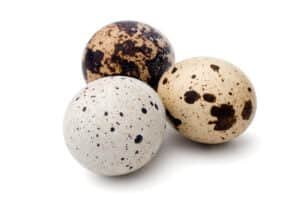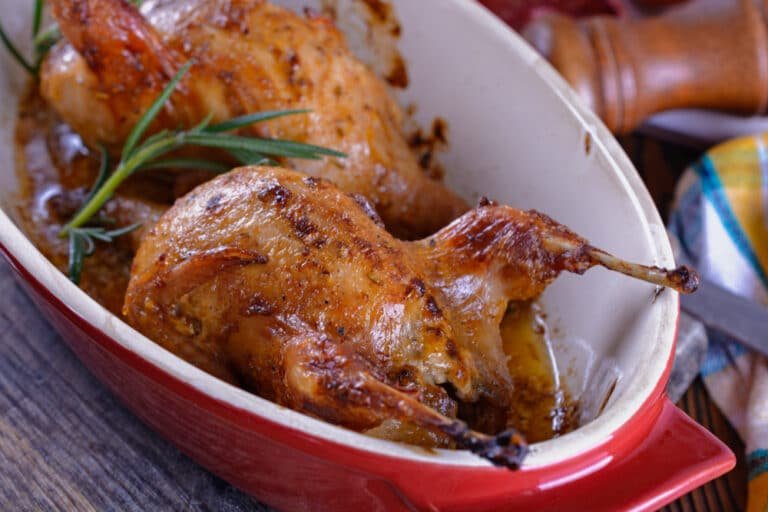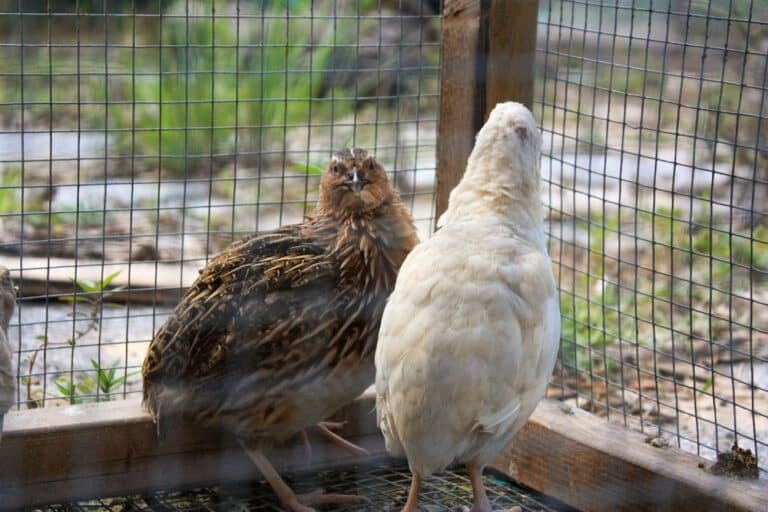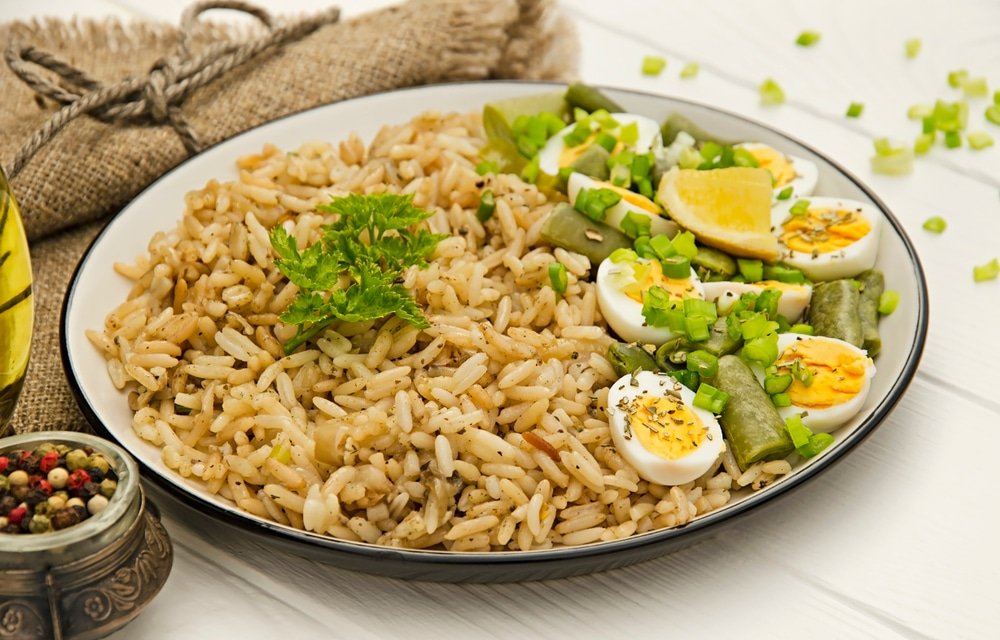Hatching Quail Eggs: 3 Tips for a Successful Life Cycle
Quail eggs, with their petite size and delicate shells, have long captured the fascination of cultures worldwide. These miniature marvels are culinary delights and carry symbolic and cultural significance in various parts of the world. From Asia to Europe, quail eggs have found their place on the tables of gourmet enthusiasts and have been incorporated into traditional dishes for centuries. In this blog, we will discuss hatching quail eggs.
Brief Overview of Quail Eggs and Their Significance in Various Cultures
In Asian cuisines, particularly in countries like Japan and China, quail eggs are considered a delicacy. Their exquisite appearance and distinct flavor make them highly sought after for both aesthetic appeal and gastronomic pleasure. In Japanese cuisine, quail eggs are often served raw as part of sushi or sashimi platters, providing a burst of richness that complements other ingredients perfectly.
Additionally, they are frequently used as garnishes or toppings in various traditional dishes due to their vibrant golden yolk. Across Europe, from Italy to France, quail eggs hold cultural significance rooted in ancient traditions.
They are commonly consumed during festive occasions such as Easter celebrations, symbolizing new beginnings and fertility. In French cuisine, these dainty eggs find their way into classic recipes like “oeufs en cocotte” (baked eggs) or “asparagus mimosa,” where they lend a touch of elegance to the dish’s presentation.
Importance of Hatching Quail Eggs for Both Hobbyists and Commercial Breeders
Hatching quail eggs holds immense importance for hobbyists and commercial breeders alike. Hatching quail eggs is an exciting venture for hobbyists passionate about raising birds or maintaining backyard flocks, allowing them to witness life’s miracles firsthand.
The process involves carefully incubating the eggs until they hatch into adorable fluffy chicks. This rewarding experience fosters a deeper connection with nature and an appreciation for the intricacies of life. On the other hand, commercial breeders rely on hatching quail eggs to meet the rising demand for quail products.
Quail are gaining popularity as a sustainable alternative to poultry farming due to their smaller size, faster maturity, and efficient egg production. Hatching quail eggs enables breeders to replenish their stock, expand their flocks, and fulfill market demands for quail meat and eggs.
Whether for personal enjoyment or commercial purposes, hatching quail eggs offers a window into the remarkable journey of avian reproduction. From cultural significance to fulfilling the needs of both enthusiasts and entrepreneurs, these tiny gems continue to captivate through their versatility and impact on various aspects of our lives.
Understanding Quail Eggs
Quail species are commonly used for egg production
When it comes to quail eggs, several quail species are commonly utilized for egg production. Among these species, the Japanese quail (Coturnix japonica) is one of the most popular choices. Renowned for its prolific egg-laying abilities, this small bird has been selectively bred over generations to optimize its egg production potential.
Other notable quail species used for egg production include the Bobwhite quail (Colinus virginianus) and the California quail (Callipepla californica). While these species may not match the Japanese quail in terms of sheer output, they still contribute to the diverse range of quail eggs available in the market.
Unique characteristics of quail eggs compared to chicken eggs
Quail eggs possess distinctive characteristics that set them apart from chicken eggs. Size is one characteristic where quail eggs are considerably smaller than their chicken counterparts.
Typically measuring around 1-1.5 inches in length and weighing around 10-15 grams, their diminutive size allows for a delicate and unique culinary experience. As for color, most chicken eggs come in shades of white or brown; however, quail eggs exhibit a mottled appearance with speckles ranging from light beige to dark brown—a visually appealing sight on any plate.
Size, color, and shell texture differences
The size variation between quail and chicken eggs extends beyond their dimensions and affects the yolk-to-white ratio. Quail eggs typically contain a higher proportion of yolk compared to their whites when compared to their chicken counterparts.
This results in richer-tasting yolks that can add a depth of flavor to various dishes like omelets or custards. The color of the yolk is also more vibrant in quail eggs, with a deep yellow to orange hue lending an aesthetic appeal to any culinary creation.
Regarding shell texture, quail eggs possess notably thinner and more fragile shells than chicken eggs. This fragility makes them easily breakable but adds to their charm and uniqueness.
Unlike chicken eggshells, which are typically smooth, quail eggshells exhibit a delicate, stippled texture. This textured surface enhances visual appeal and presents an interesting tactile experience when handling these petite eggs.
Nutritional composition variations
Beyond their appearance, quail eggs differ from chicken eggs regarding nutritional composition. While both types of eggs are excellent protein and essential nutrient sources, quail eggs tend to have higher proportions of certain vitamins and minerals per unit volume. Rich in Vitamin A, B-complex vitamins (B1, B2, B6), iron, phosphorus, and zinc, quail eggs provide a concentrated dose of nutrients despite their small size.
Additionally, their higher yolk-to-white ratio contributes to a larger proportion of healthy fats and cholesterol than chicken eggs. Understanding the unique characteristics and nutritional differences between quail and chicken eggs allows for informed decision-making when incorporating these delicate delights into culinary endeavors or considering them as part of a balanced diet.
Preparing for Hatching Quail Eggs
Selecting Fertile Eggs from Reputable Sources or Breeding Your Quails
Embarking on the journey of hatching quail eggs begins with acquiring fertile eggs, which can be obtained from reputable sources or by breeding your quail. When choosing to purchase eggs, it is crucial to ensure they come from trusted suppliers who prioritize the health and quality of their stock.
Reputable sellers will provide detailed information regarding the eggs’ breed, age, and origin. It is advisable to opt for freshly laid eggs as they have a higher chance of successful incubation.
On the other hand, breeding your quail offers a more hands-on approach and gives you complete control over the breeding process. To ensure successful breeding, selecting parent birds in their prime reproductive age and exhibiting excellent health is imperative.
Optimal age ranges vary depending on quail species but generally fall between 6 months to 1 year. Birds within this age range possess robust fertility levels and are more likely to produce healthy offspring.
Collecting and Storing Eggs Correctly Before Incubation
Once you have obtained fertile quail eggs, proper handling and storage become paramount before incubating. Collecting eggs daily is crucial as it ensures freshness and minimizes potential damage caused by prolonged exposure or rough handling. Using clean hands or gloves while collecting eggs helps prevent contamination that might hinder successful incubation.
To maintain egg quality, storage conditions must emulate those found in nature when quail lay their eggs for nesting purposes. Storage temperature should range between 50-60°F (10-15°C) for optimal results.
Storing the eggs with their pointed ends slightly downwards helps prevent internal membrane detachment during incubation. A key consideration is storing the collected eggs no longer than ten days before incubation, as prolonged storage can negatively impact hatchability rates.
Labeling the eggs with the collection date aids in identifying time-sensitive batches. Remember to avoid washing quail eggs before incubation, as this removes the protective bloom on the shell and increases susceptibility to bacterial contamination.
Setting Up an Incubator for Optimal Conditions
Creating an environment closely mimicking natural incubation conditions is vital for successful hatching. An incubator provides controlled temperature, humidity, and ventilation necessary for embryo development. Understanding and fulfilling these requirements for quail eggs is crucial to achieving optimum hatch rates.
Temperature control plays a pivotal role in embryonic development. Maintaining a consistent incubation temperature of around 99-101°F (37-38°C) for quail eggs is vital throughout the process.
Any fluctuations can lead to developmental abnormalities or reduced hatching success. Humidity is equally important during incubation, affecting egg weight loss and embryo hydration levels.
While optimum humidity levels vary depending on breed and incubation stage, aiming for a relative humidity range of 45-55% during the first 14 days and increasing slightly after that helps ensure proper embryonic development. Choosing the right type of incubator is another critical aspect to consider based on individual needs.
Still-air and forced-air incubators are two common options available in the market. Still-air models provide gentle heat circulation but require manual temperature adjustment and careful monitoring of heat distribution within the unit’s confines.
In contrast, forced-air models utilize fans that evenly distribute warm air throughout the chamber, ensuring uniform heating. Following appropriate protocols when selecting fertile eggs or breeding quail, handling eggs correctly before storage, and setting up an ideal environment within an appropriate incubator lays a solid foundation for successful quail egg-hatching endeavors.
Incubation Process
Egg Positioning and Turning Frequency During Incubation Period
During the incubation period, proper egg positioning and regular turning are crucial in ensuring the successful hatching of quail eggs. Unlike chickens, quail embryos can easily adhere to the inner shell membrane if not regularly turned.
This prevents the embryo from receiving adequate oxygen and nutrients, leading to developmental issues or even death. Therefore, it is essential to turn the eggs multiple times a day.
To prevent embryo sticking, it is crucial to position the eggs correctly in the incubator. The round end of the egg, also known as the air cell end, should be facing upward while incubating quail eggs.
This positioning allows for optimal airflow within the egg and aids in embryo development. Avoiding sharp or sudden movements while handling the eggs can prevent damage to delicate developing embryos.
Recommended Methods: Manual Turning or Automatic Turners
Two main methods for turning quail eggs are manual turning and automatic turners. Manual turning involves gently rotating each egg by hand several times daily—typically three to five times at evenly spaced intervals—to ensure even weight distribution within each embryo.
This method requires diligence and consistency but can be a rewarding hands-on experience for breeders. On the other hand, automatic turners provide convenience for those with limited time or availability throughout the day.
These devices gently rotate all eggs simultaneously at regular intervals using built-in mechanisms. Automatic turners mimic natural nesting behaviors and promote consistent turning without requiring constant human intervention.
Monitoring Temperature and Humidity Levels throughout Incubation
Maintaining proper temperature and humidity levels within your incubator is paramount for successfully hatching quail eggs. The ideal temperature range for quail egg incubation typically falls between 99-101°F (37.2-38.3°C). Consistency in temperature is crucial, as fluctuations can negatively impact embryo development and hatch rates.
Humidity levels are equally important during incubation and vary depending on the stage of development. During the initial incubation period, humidity should be maintained at approximately 50-55%.
As the quail embryos develop, humidity should gradually increase to around 60-65% in the last few days before hatching. An incubator thermometer should be placed at egg level to monitor temperature accurately, as this is where the embryos experience the most significant heat fluctuations.
Similarly, a hygrometer allows for precise monitoring of humidity levels within the incubator. Regularly checking and adjusting these factors will help create optimal conditions for successfully hatching quail eggs.
Proper egg positioning and regular turning during incubation prevent the embryo from sticking to the shell and promote healthy development in quail eggs. Breeders can opt for manual or automatic turners depending on their preferences and availability.
Additionally, closely monitoring temperature and humidity levels throughout the incubation process ensures favorable conditions for successful hatching. By paying attention to these details, breeders can increase their chances of hatching strong and healthy quail chicks from their eggs.
Candling Quail Eggs
Purpose and Benefits of Candling during the Incubation Process
Candling is a crucial practice during the incubation process of quail eggs, offering valuable insights into their development. The primary purpose of candling is to assess the viability and fertility of the eggs. Shining a light source through the eggshell allows one to observe internal changes, determine embryo development, and identify any potential issues that may hinder successful hatching.
One of the key benefits of candling quail eggs is its ability to provide early detection and removal of infertile or damaged eggs. This enables breeders to optimize their hatch rate by focusing their resources on viable ones.
Additionally, candling allows for monitoring embryonic growth by spotting irregularities early on, such as improper development or mortality within the egg. This information assists in making informed decisions about adjusting incubation conditions or providing necessary interventions if required.
Equipment Needed for Candling (Flashlight, Egg Candler)
Candling requires minimal equipment that is relatively easy to acquire. A bright flashlight or an egg candler designed for this purpose are commonly used tools.
A flashlight with a strong beam works well for occasional candling purposes in smaller-scale operations. However, dedicated egg candlers offer better visibility due to their design, often featuring an adjustable light intensity and a cradle to hold the egg securely.
When selecting an egg candler or flashlight, it’s essential to consider factors such as brightness and adjustability according to personal preferences and available budget. It’s worth noting that some egg candlers come with additional features like magnification lenses that aid in detecting fine details during examination.
Signs of Fertility, Embryo Development, or Potential Issues
Candling quail eggs allows breeders to gather vital information about the embryos’ health and development. By examining the candled eggs, one can identify signs of fertility, such as the presence of a developing embryo or visible blood vessels.
A fertile egg will show a network of delicate veins that supply nutrients to the growing chick. Additionally, candling enables breeders to spot early signs of potential issues that may hinder hatching success.
These issues include cracked or damaged shells, malformed embryos, or any abnormal development that could affect the overall viability of the egg. Identifying these concerns early on provides an opportunity for interventions like adjusting incubation conditions, improving nutrition, or removing non-viable eggs to enhance hatch rates and maximize healthy chick production.

Conclusion
Candling quail eggs is an indispensable practice during incubation, granting breeders valuable insights into egg viability and embryo development. By assessing eggs through bright light sources like flashlights or dedicated egg candlers, breeders can determine fertility rates and detect potential issues early on.
Candling provides an opportunity for intervention by adjusting conditions and removing non-viable eggs for optimal hatch rates. Through careful observation during candling sessions, breeders can ensure a higher probability of successful hatching while minimizing risks associated with damaged shells or abnormal embryonic development.
By employing this method diligently and making informed decisions based on its findings, breeders can improve their breeding programs and achieve healthier quail more efficiently. Embarking on the journey of hatching quail eggs is rewarding and enlightening as it unveils nature’s wonders in miniature form.
Proper knowledge and dedication make the hatching process a gateway to new life, fostering a deep appreciation for these remarkable avian creatures and their intricate development. So, embrace the joy of candling quail eggs and witness the miracle of life unfold before your eyes!






